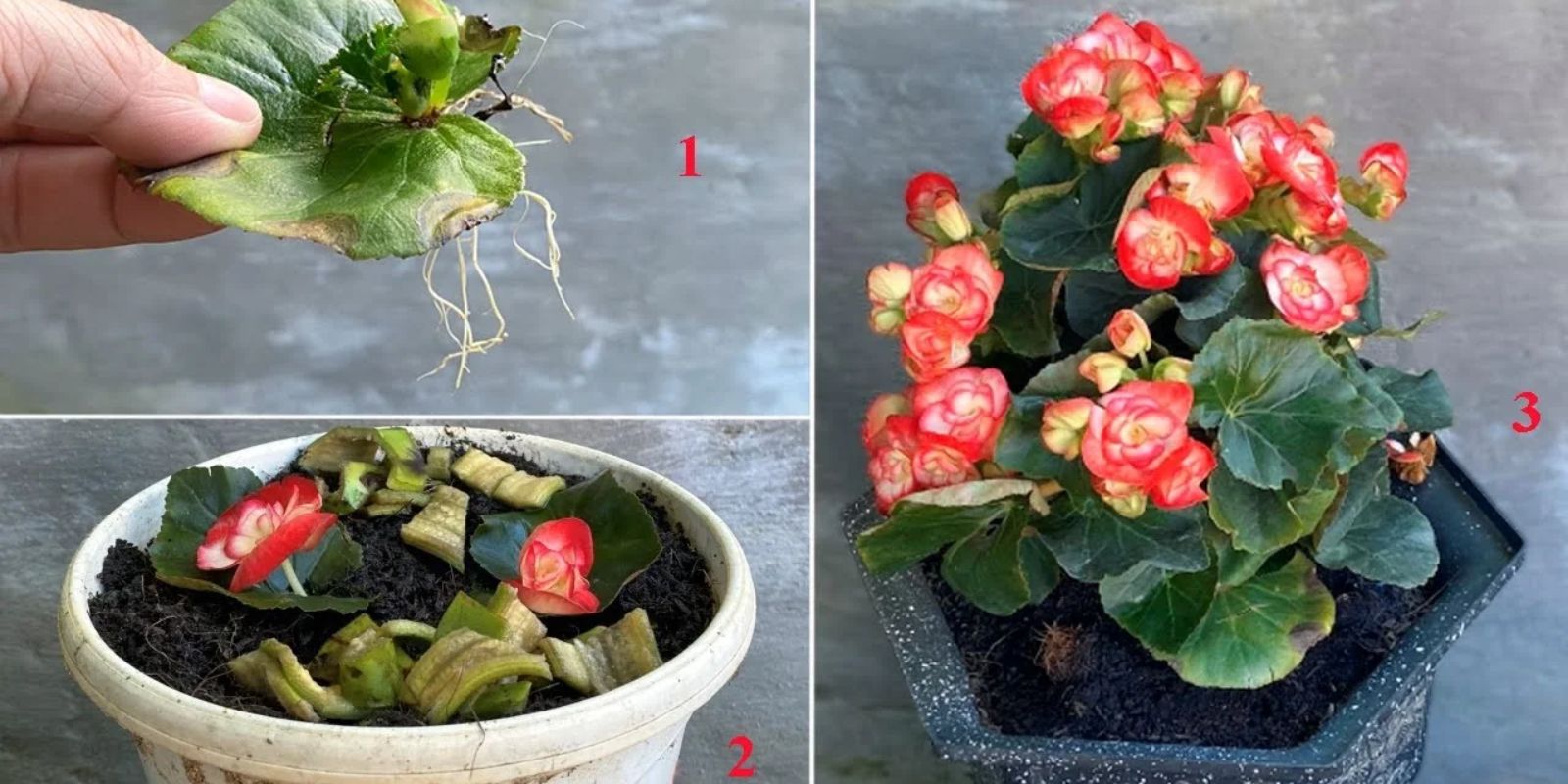Introduction
Begonias are beloved for their vibrant blooms and lush foliage, making them a popular choice for gardeners and houseplant enthusiasts. While propagating begonias may seem like a task requiring advanced techniques, nature provides a simple and surprising ally: bananas. Using the natural enzymes and nutrients in bananas, you can propagate begonia stems effortlessly and achieve instant multiplication. This unique method is cost-effective, eco-friendly, and ideal for gardeners of all experience levels.
In this article, we’ll dive into the science behind the banana trick, walk you through the step-by-step process of propagating begonias, and share tips for success. Get ready to transform your gardening game with this incredible technique!
Why Bananas Work for Propagation
The humble banana is more than just a snack; it’s a powerhouse of nutrients and natural growth stimulants:
- Natural Enzymes: Bananas contain compounds that promote root development, like auxins and cytokinin.
- Rich in Nutrients: Potassium, phosphorus, and calcium in bananas nourish developing roots and strengthen the stem.
- Organic and Accessible: Unlike synthetic rooting hormones, bananas are natural and widely available.
When applied to begonia stems, these properties create the perfect conditions for rapid root growth.
Materials You’ll Need
Before you start, gather the following items:
- Healthy begonia plant for cuttings
- Ripe banana
- Clean pruning shears or scissors
- Pot or container with well-draining soil
- Watering can
- Optional: Transparent plastic bag for a humidity dome
Step-by-Step Guide: Propagate Begonias with a Banana
Step 1: Choose and Prepare the Stems
- Select Healthy Stems: Look for stems that are firm, free from pests or diseases, and have at least 2–3 nodes.
- Cut the Stem: Using clean pruning shears, cut the stem at a 45-degree angle just below a node. This maximizes the surface area for rooting.
- Trim Excess Leaves: Remove the lower leaves from the stem, leaving only the top few leaves intact. This reduces water loss during propagation.
Step 2: Prepare the Banana Rooting Medium
- Slice the Banana: Take a piece of ripe banana (about 2–3 inches) and mash it slightly into a soft pulp.
- Coat the Cutting: Dip the cut end of the begonia stem into the mashed banana, ensuring it’s fully covered.
Step 3: Plant the Banana-Coated Stems
- Prepare the Soil: Use a well-draining potting mix, preferably one containing peat moss, perlite, or sand.
- Insert the Stem: Make a small hole in the soil and plant the banana-coated stem. Ensure the coated section is buried, while the upper part of the stem and leaves remain above the soil.
Step 4: Create the Ideal Environment
- Water the Soil: Lightly water the soil to keep it moist but not soggy.
- Add Humidity: If your environment is dry, cover the pot with a transparent plastic bag to retain moisture. Ensure the bag doesn’t touch the leaves.
- Provide Indirect Light: Place the pot in a warm area with bright, indirect sunlight. Avoid direct sunlight, as it can dry out the cutting.
Step 5: Monitor and Wait
- Check Moisture Levels: Keep the soil consistently moist by watering when the top layer feels dry.
- Watch for Growth: Within 2–3 weeks, roots will begin to form. Look for new leaf growth as a sign of successful propagation.
Benefits of Propagating Begonias with Bananas
- Eco-Friendly Solution: Using banana pulp is a sustainable and chemical-free alternative to synthetic rooting hormones.
- Affordable Gardening: This method reduces costs by utilizing household items.
- Encourages Recycling: Even the banana peel can be composted or used as an organic fertilizer.
- Fast Results: The nutrients in bananas accelerate rooting and plant growth.
- Beginner-Friendly: No special tools or expertise are needed, making it accessible to everyone.
Tips for Successful Propagation
- Use Ripe Bananas: Overripe bananas work best as they have higher levels of natural enzymes.
- Choose Healthy Cuttings: Avoid stems that are damaged, diseased, or excessively woody.
- Avoid Overwatering: Too much water can cause the cutting to rot. Ensure the pot has proper drainage.
- Transplant Carefully: Once roots are established, transplant the begonia to a larger pot or garden bed without damaging the fragile roots.
- Feed the Plant: After transplanting, use a balanced fertilizer to encourage strong growth and vibrant blooms.
Common Mistakes and How to Avoid Them
- Using Unripe Bananas: Unripe bananas lack the nutrients and enzymes necessary for propagation.
- Solution: Ensure the banana is soft and sweet-smelling.
- Submerging Leaves: Placing leaves in the soil can cause rot.
- Solution: Keep leaves above the soil line.
- Neglecting Light Needs: Too much or too little light can hinder growth.
- Solution: Place the pot in bright but indirect sunlight.
Why Grow Begonias?
Begonias are versatile and stunning plants that thrive both indoors and outdoors. They come in a variety of colors and forms, from cascading varieties perfect for hanging baskets to compact ones ideal for containers. Propagating begonias allows you to expand your garden, share plants with friends, and create a lush, vibrant space with minimal effort.
Conclusion
Propagating begonias with the help of a banana is a game-changing gardening hack that’s both simple and effective. By following these steps, you can turn a single plant into an abundance of thriving begonias, ready to enhance your garden or home.
This eco-friendly method not only saves money but also promotes sustainable gardening practices. Try it today, and experience the joy of watching your begonias multiply effortlessly!
🌱 #BegoniaPropagation #GardeningHacks #BananaMagic #EcoFriendlyGardening #VibrantBegonias #PlantTips #GardenGoals #DIYPropagation #SustainableGardening

